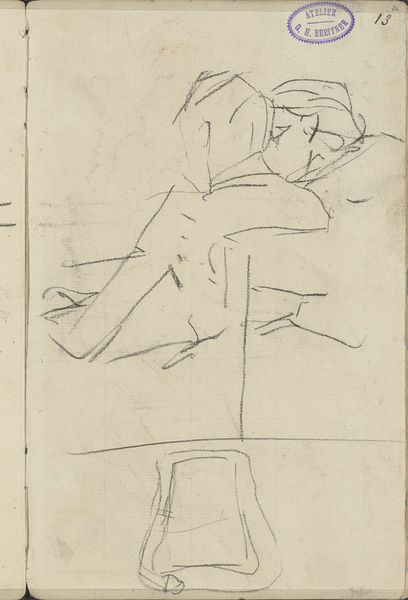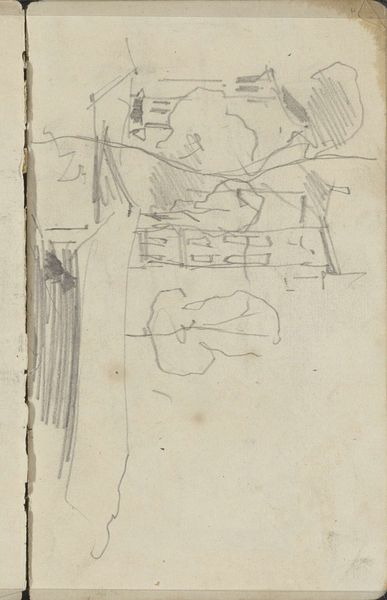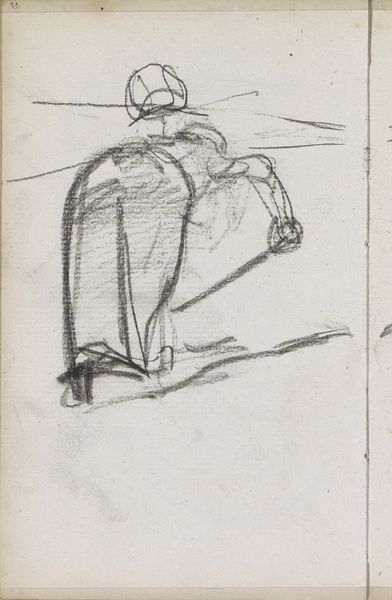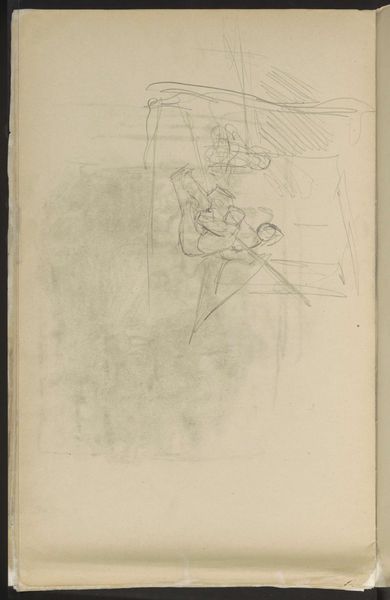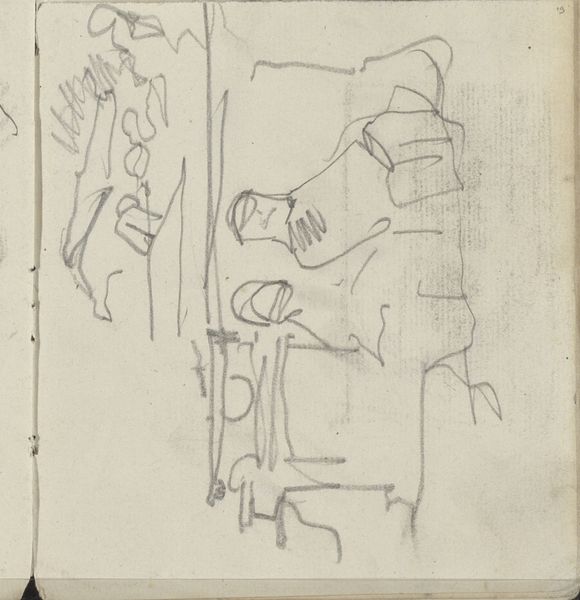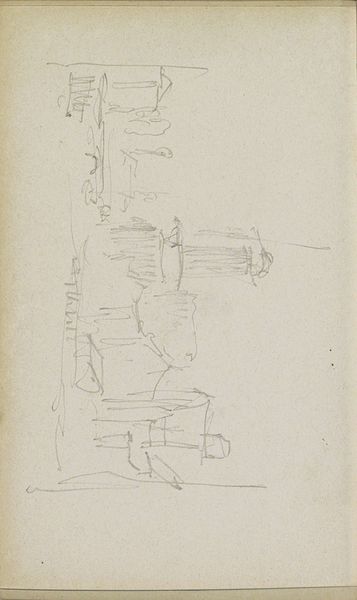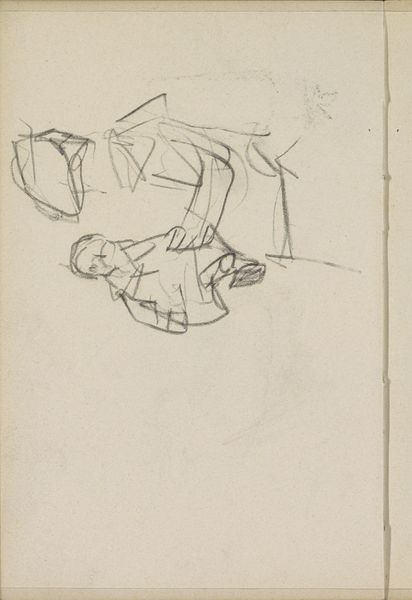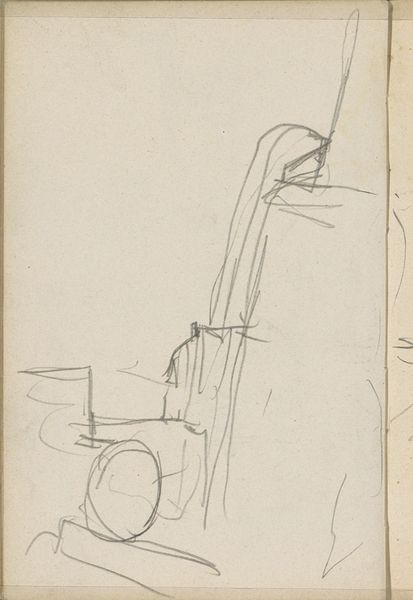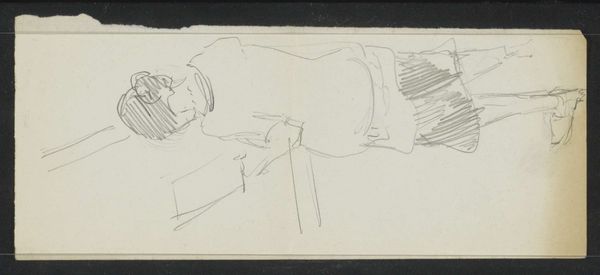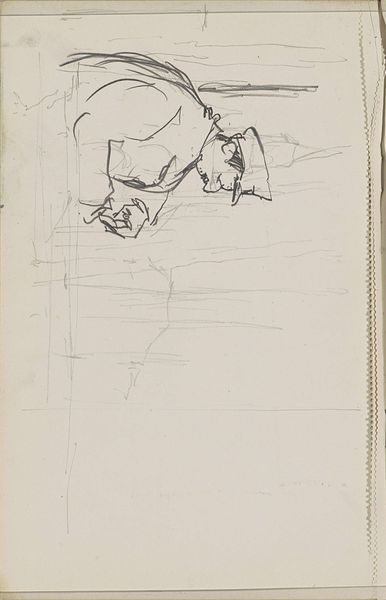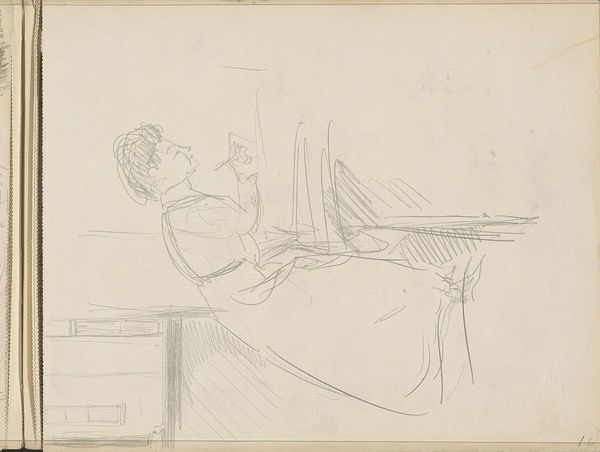
Copyright: Rijks Museum: Open Domain
Editor: Here we have George Hendrik Breitner’s "Three Children at an Organ," a pencil sketch from around 1902, currently residing in the Rijksmuseum. It’s interesting how loose the lines are; it feels like a fleeting moment captured. What strikes you when you look at this, considering the social context of the time? Curator: What immediately comes to mind is the increasing visibility, and also sentimentalization, of childhood in the late 19th and early 20th centuries. The middle-class family becomes this sanctified unit, and children take center stage. The organ, as a symbol of domestic musicality and cultural refinement, reinforces this. But does the sketch convey only idealized sentiment, or something else? Editor: I see the hurried lines of the sketch as a counterpoint. It suggests the energy and unpredictability of children, rather than a stiff, posed formality. It's like he's documenting real life intruding on the ideal. Curator: Precisely! Breitner was known for capturing modern life, its dynamism and fleeting impressions. So, how does the medium itself, this quick pencil sketch, contribute to his broader artistic project? Does its inherent ‘unfinished’ quality somehow change the way we read its cultural meanings? Editor: I think the sketch-like quality democratizes the scene. A polished painting might feel staged, for a wealthier audience, but the raw pencil feels accessible, like a snapshot of ordinary, bourgeois life in motion, meant to appeal to a growing middle class. It almost normalizes it, makes it a scene from daily life anyone could observe, not just those in elite circles. Curator: A wonderful point. By making it informal, does it also risk stripping it of its significance, its place within the evolving constructs of family life? Editor: Maybe a little, but it also offers a glimpse of reality that transcends pure ideology. It lets us see children as active subjects within this social framework, not just passive recipients of it. Curator: I agree. It’s a complex interplay of societal ideals and individual agency. I appreciate how your perspective clarifies that for me! Editor: Thanks! I definitely see more nuances after this discussion.
Comments
No comments
Be the first to comment and join the conversation on the ultimate creative platform.
